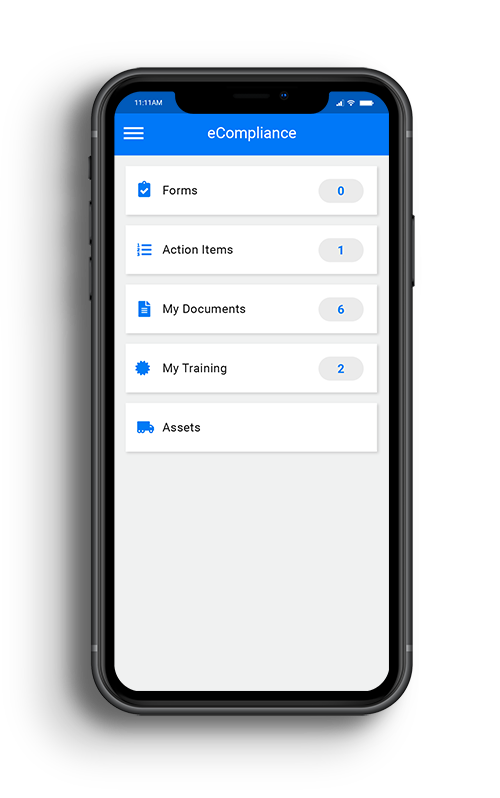
Share this Post
PUBLISHED
April 14, 2022
READ TIME
4 Minutes
WRITTEN BY
![]() Dina Adlouni
Dina Adlouni
Dina is the resident Content Writer at EcoOnline North America . When she’s not writing about health and safety, you’ll find her enjoying a cup of tea while watching her favorite sitcom.
What is the process of continuous improvement?
A strong continuous improvement process can help you mitigate risks on-site and implement a more proactive approach to safety. It can also help strengthen your safety program.
What is the process of continuous improvement? This process is meant to help an organization’s management team regularly assess their overall safety management system as well as its individual components. It is executed through the Plan, Do, Check, Act Cycle.
You might be thinking, ‘What is the Plan, Do, Check, Act Cycle?’ This cycle entails four main steps (Plan, Do, Check, Act) which involve several elements including: identifying safety objectives and mapping out processes, communicating procedures and conducting training, checking and assessing implementation of your original plan, and acting on deficiencies found.
Learn more in our new EHS Management Continuous Improvement Guide.
Common Challenges
You might run into certain challenges when implementing your continuous improvement plan and processes, but have no fear! EcoOnline has you covered.
We’ve highlighted common challenges below and how you and your team can overcome them to effectively conduct the Plan, Do, Check, Act, Cycle at your organization and reach your safety objectives.
1. A lack of visibility into the safety program
One of the most common challenges faced, is not having proper transparency into your safety program. Without a 360-degree view into all elements of safety, you will find it challenging to set your safety objectives, decide what resources you need to accomplish them, and more.
Time consuming manual process is one of the most common culprits for a lack of visibility. According to an EcoOnline survey conducted in 2020, on over 800 companies in the U.S. and Canada from small, medium, and enterprise businesses in a wide variety of high-risk industries, time consuming processes was listed by safety leaders in every sector and size as a major challenge. This is because many are still using traditional paper or Excel-based systems, which grants little insight into an organization’s safety program. It also makes conducting certain safety processes tedious and lengthy, leading to many safety professionals getting lost in administrative work
Having a digital, cloud-based solution at hand can help eliminate these struggles and grant greater transparency into all aspects of your safety program.
2. Not enough employee participation and meaningful collaboration with management
Another common hurdle is not having enough employee participation in safety activities, as well as meaningful collaboration with management. This is essential to have an impactful continuous improvement process, since both the front-line workforce and management should work together to identify risks and hazards, as well as establish safe work practices and procedures at the organization. It is this collaboration that helps provide a strong foundation for safety policies and procedures in your safety program.
One way to get employees more invested in safety is by putting it in their hands. Empower them with the right tools and resources to conduct easy hazard checks, inspections, and assessments such as a cloud-based, mobile-first solution. With safety at their fingertips, with the help of an easy-to-use solution, they will be more inclined to participate in safety activities.
Showing all employees their feedback and opinions are valued and implemented when possible, is another valuable way to boost participation and engagement rates. This can be done during safety meetings and toolbox talks. Once workers see that they are contributing to your safety program and that their opinion matters, they will show more dedication and investment towards safety and protecting their fellow workers on-site.
3. Insufficient data
Not having the right data to make impactful safety changes is another common challenge faced when implementing an effective continuous improvement program. To identify opportunities and set proper safety objectives for your organization, you must be able to properly identify gaps or deficiencies in your program based on audits, observations, and more.
Being able to look at trends and patterns within your safety program is a struggle many share due to the use of paper-based systems. Without access to a single source of truth which can help track data, it is difficult to identify the weaknesses in your safety program you need to act on within the continuous improvement process.
A robust data and analytics solution can help you easily track all safety data such as your lost time injury rates (LTIR), days away restricted or transferred (DART), and more to understand what the most common sources of injury or illness on-site are. This can help you build a more effective continuous improvement plan and a stronger safety program.
How EcoOnline Can Help
The EcoOnline suite of solutions can help you in every area of the Plan, Do, Check, Act, Cycle to overcome the above common challenges and implement a stronger continuous improvement process.
Curious to learn how? Speak to an EcoOnline representative today or fill out the form below.
Learn How You Can Get EcoOnline North America
Complete this form and one of our safety experts will be in touch.

